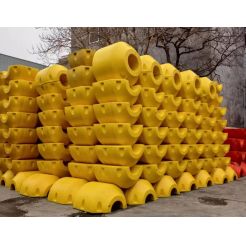Bromobutyl Rubber Stopper for Injection/ Infusion
Bromobutyl Rubber Stopper Mainly used with glass vials and large infusion bottles, with aluminum caps or aluminum-plastic(flip-off) caps.
Product Description
Bromobutyl Rubber Stopper for Injection/ Infusion
Product Description
Mainly used with glass vials and large infusion bottles, with aluminum caps or aluminum-plastic(flip-off) caps.
Advantage for Bromobutyl Rubber Stopper:
1. High cleanliness standard. Production under 100,000 class cleaning area,
2. Superior service system, with professional technical personnel, to provide customers with supporting and personalized services at any time;
3. Supply well-known pharmaceutical manufacturers home and abroad.
Core material: Rubber from Exxon Mobil
Size and color: Customize
bromobutyl rubber stopper
Butyl rubber, derived synthetically from petrochemicals, is a copolymer of isobutylene, and to a smaller extent, isoprene. Subsequent halogenation results in a halobutyl rubber – typically bromobutyl or chlorobutyl.
What is the difference between bromobutyl rubber and chlorobutyl rubber?
What is bromobutyl rubber?
Bromobutyl Rubber: is a terpolymer of isobutylene, isoprene and brominated Isoprene.
processing
When bromine is used as the halogen for producing bromobutyl rubber, it is generally added at a concentration of 2%;
Bromine is more reactive than Chlorine, so a stabilizer is often added to the rubber (such as soybean oil at 1.3%).
The use of antioxidants (such as BHT) is approximately equal in both bromobutyl rubber and chlorobutyl rubber.
Advantages and Disadvantages
Advantages:
lower hygroscopicity and is a better choice for freeze dried / lyophilization product applications. Higher stability and generally have a longer shelf life.
faster cure rates and a shorter scorch or cure induction period (more efficient production)
requires lower levels of curatives and enables one to use a wider range of accelerators.
Disadvantages:
stabilizers are required in the production of bromobutyl rubber (such as soybean oil).
heat sensitivity is a greater concern with bromobutyl stoppers.
What is chlorobutyl rubber?
Chlorobutyl Rubber: is a terpolymer of isobutylene, isoprene and chlorinated Isoprene.
processing
chlorine is added at a concentration of 1.1 – 1.5% in chlorobutyl rubber.
Chlorine, being more inert, does not require the use of any stabilizers.
Advantages and Disadvantages
Advantages:
better resistance to heat and is the preferred stopper for high-heat sterilization techniques.
efficiently produced without the use of stabilizers.
Disadvantages:
longer curing times, resulting in higher production costs
usage of bromobutyl rubber
Many modern rubber formulations used in the pharmaceutical industry for caps (stoppers and plungers) use bromobutyl rubber as a base. Compared to other rubbers, bromobutyl rubber is usually lower in extractables and has excellent resistance to water and oxygen penetration. However, when selecting the most suitable rubber formulation for a plug or plunger, it is important to remember that the formulation contains more than just Rubber Stopper - it also includes fillers, vulcanizing agents, antioxidants, pigments, etc. The sum of these ingredients, and the way in which the blend is made, gives the formulation its properties.
Having the right bromobutyl rubber, but not the right additives for the complete formulation, will result in poor performance. Having the right formulation and understanding the needs of the drug, such as compatibility with the formulation and long-term stability, will help achieve high performance.
FLOW CHART




